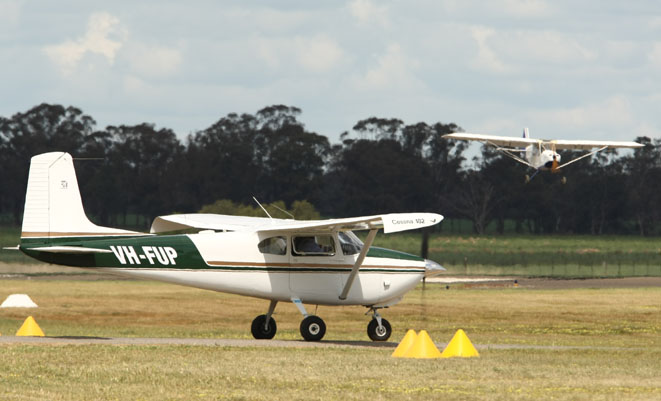
One of the most significant pilot licensing reforms by the Civil Aviation Safety Authority (CASA) in recent times has been the introduction in July of the Basic Class 2 Medical Certificate (BC2), but as with all reforms, it has potentially given rise to further issues and even division within the aviation community.
The new BC2 Medical Certificate allows Private Pilot Licence (PPL) holders to have their medical examinations conducted by any medical practitioner who can conduct a motor vehicle driver examination, rather than a Designated Aviation Medical Examiner (DAME) as was previously required.
The medical standard is exactly the same as a commercial driver standard (Austroads), but is accompanied by restrictions to the type of flight that can be conducted.
These are:
- private operations by day under the visual flight rules (VFR) and below 10,000 feet;
- a maximum of five passengers;
- piston engine aircraft;
- maximum take-off weight (MTOW) of less than 8,618kg;
- no use of operational ratings (eg. instructor rating, instrument rating);
- no use of flight activity endorsements (eg. aerobatics, low level).
The restrictions do not apply if a suitably qualified pilot with a valid Class 1 or Class 2 medical certificate occupies a control seat.
Delving further into the Federal Legislative Instrument (CASA EX65/18), there is also a further requirement for the pilot to notify the passengers that they do not hold a standard private pilot’s medical certificate, but a certificate of a lower standard complying to that required by commercial road drivers. The pilot must also have the medical certificate available for inspection by the passengers.
Seen as a great step forward in its ease of process, as well as reduced administration and cost, the BC2 Medical Certificate reform was initially met with a warm response – but that response has chilled on certain fronts. In its wake, the Australian Aircraft Owners and Pilots Association (AOPA) has highlighted what it perceives as an inconsistency in the new medical standard.
Currently, a different medical standard exists within another group of aviators. Recreational Aviation Australia (RAAus) issues Recreational Pilot Certificates (RPC) under an exemption from CASA, allowing its members to fly RAAus-registered two-seat recreational aircraft up to 600kg MTOW under visual flight rules (VFR) and outside controlled airspace. Critically, the medical standard is of self-assessment in nature, for holders of a current motor vehicle driver’s licence.
It is described on the RAAus website as: “With an RPC issued by RAAus, you only need to maintain a medical standard equivalent to that required to drive a motor vehicle. This is confirmed by you as part of your initial membership declaration. However, if you are over 75 years of age or have a known medical condition that’s listed on our website, then a doctor needs to confirm your health standard with an annual examination and a written statement for RAAus records.”
It is this self-assessment for an RPC holder as opposed to the BC2 medical examination for a Private Pilot Licence holder that has caused rumblings within the industry.
AOPA executive director Benjamin Morgan addressed the issue in an open letter on September 21 to Deputy Prime Minister and Minister for Infrastructure, Transport and Regional Development Michael McCormack and Shane Carmody, the chief executive and director of aviation safety at CASA.
In his correspondence Morgan highlighted the issue of comparing risk between the two forms of licensing, stating: “regarding double standards on private pilot medical certification. Quite simply it is either safe or it is unsafe for a private pilot to operate an aircraft with an MTOW of 600kgs with one passenger outside of controlled airspace. For CASA to assert that it’s risk-assessments have concluded that it is only safe if the pilot is a member of a private company is ridiculous. CASA RPL and PPL holders are trained to a higher pilot standard than their RAAus counterparts and therefore should represent a much lower risk to aviation safety!”.
Morgan also went on to state that “CASA must now come clean and publicly publish its risk-assessments and explain to the Australian public why it has denied pilots with a higher standard of training access to a self-certification private drivers licence medical.”
It now appears that what was initially heralded as a step forward in aviation medical certification and a win for industry advocacy, on closer examination has given rise to yet another vigorous debate. While the Basic Class 2 Medical Certificate legislation is now in force and available, it would seem that a final consistent standard across the broader piloting community that satisfies all parties may still be some time away.











